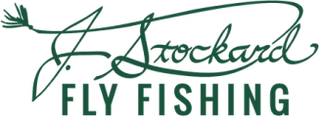Guest Blogger: Mike Cline, Bozeman MT
Canadian Pine Squirrel has turned out to be a very versatile tying material. Where I fish in SW Montana, micro zonkers are very popular and are routinely tied with pine squirrel instead of rabbit fur. The fine fur is also useful for many types of nymph bodies and leech patterns. One of my go-to flies has always been the woolly bugger as I just thrive on striping streamers for Montana and Wyoming trout. Woolly bugger bodies are typically tied with some form of chenille or dubbing and palmered with a suitable hackle. The traditional go-to colors have always been shades of black, brown or olive, colors that pine squirrel skins are found in. A recent experience on the Missouri River prompted me to experiment with pine squirrel for woolly buggers.

It was late April and the tail water flows were very high out of Holter Dam. Running in excess of 8000 CFS, the water was fast, deep and a bit discolored. Taking the advice of one of the local fly shop guys, I was using small, un-weighted pine squirrel zonkers with a lot of flash on a 200 grain sink tip with a very short, stout leader (OX, at less than 3’). Using an un-weighted fly in deep, fast water might seem to be the wrong way to get a fly deep and in front of trout, but it’s not. The un-weighted fly can be cast with much less effort, more accurately and longer than heavily weighted flies, especially in wind. It’s the short, stout leader on the heavy sink tip that gets the fly deep fast. 30 foot sink tips will rocket to the bottom, even in heavy water. In the slightly discolored water, the flash does a good job of attracting strikes. Although it wasn’t an epic day, I did land five rainbows and browns over 20” using this technique. After that experience, I began to think about adapting pine squirrel to woolly buggers for the same reason.

My pine squirrel woolly buggers are tied on #6 hooks, typically Dai Riki 700, Daiichi 1850 or TMC 200R. These can be tied completely un-weighted or with a few turns of very light lead/tungsten wire at mid shank. Heavy weighting with beads or cones not required and actually help save wear and tear on the fly rods. The tailing is traditional woolly bugger with two levels of flash. Using bright orange thread (6/0), I first tie in four or five strands of Angel Hair (Crayfish or PMD) and keep doubling it. When completely tied in, the angel hair is trimmed to about two-thirds the hook shaft length. This provides a lot of flash and support for the marabou tail. A chunk of marabou is tied in over the angel hair, with the feather shafts extending almost to the hook eye. This builds up a nice base for the pine squirrel. On top of the marabou I tied 4 or 5 strands of some saltwater flashabou in mirage or other bright, silvery color. At this point, the body of the fly should be somewhat uniform in diameter up to just short of the hook eye. At this point, I tie in a section of fine copper wire or a nice saddle hackle of the appropriate color at the base of the marabou. Now for the pine squirrel. I take a strip of pine squirrel, tying it in skin side up at the base of the marabou. The fur should be facing away from the hook. Generally, I tie in about 1/16 – 3/32” of skin to secure the pine squirrel. Then using a gel based super glue, I put a small amount of glue on the hook shaft. The pine squirrel is then wrapped up the hook shank, taking care not to overlap the skin or get the fur sullied with the glue. The squirrel is tied off about 3/16” behind the eye. The hackle or wire is then palmered up the hook shank and tied off at the eye and a nice head is formed and cemented. This has proven to be a very durable fly, but I’ve found that eventually the hackle breaks after a lot of fish, whereas the wire doesn’t. On the wired flies, dozens of fish will generally wear down the fur to a nub, leaving the wire intact.
These flies are proven very effective in deep fast water. They provide a flashy, high profile fly that give the impression of lots of bulk when suspended in the water, but the pine squirrel sheds water very well so casting the un-weighted flies all day is a joy.
I’ve been using these flies in Yellowstone on the Firehole and Madison River this spring with great success.
Note from J. Stockard: You can find all of the fly tying items (chenille, dubbing, hackle, thread, wire, flash, marabou) that Mike mentions in this post at J. Stockard. In particular, check out our pine squirrel .

